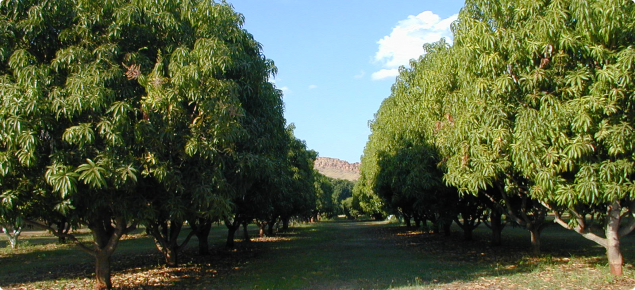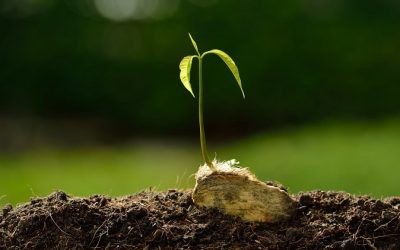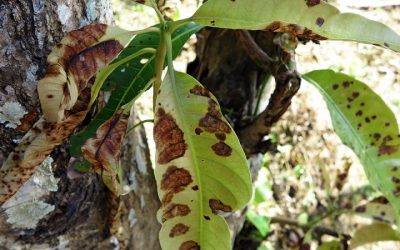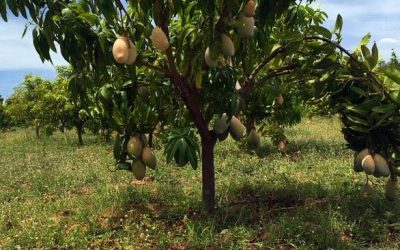Proper management of your Orchard.

Mango trees need continuous attention in order to ensure continued harvests
and to improve the lifespan of the orchard trees.
Pruning
The form and height of a mango tree needs to be controlled to guide the tree and to facilitate harvesting at a later stage.
– Formative pruning – is done in the first years of the young tree to guide the tree into the desired shape. In the first year, when the trees are about 1 m from the ground, cap the seedling in order to encourage side branches (3 to 4 well branches). Thereafter, every second flush of leaves should be removed.
– Structural pruning – should be done for proper maintenance of the trees. The height of the trees should be controlled to about 3.5 m in height and at this stage, all branches at knee level (about 0.5 m) should be pruned (skirt pruning).
Any dead branches and sucker branches should be removed to allow more sunlight through the canopy to the ground under the tree. This should be done every year in order to maintain the tree at 3.5 m and develop a suitable canopy
density.
Improving flowering and fruit formation
Young grafted trees may flower within two years, but fruit formation should be avoided as it can considerably affect the growth of the trees. All blossoms should be plucked away until the fourth year when flowers should be permitted to develop. It is further recommended to keep the orchard area clean by removing all ripe fruit and weeds from around the tree. In addition, up to one third of undersized fruit should be removed after fruit set in order to encourage a larger size of the remaining fruit.
Alternation of flowering and fruit formation (fructification) is still a problem in mango production, especially in humid areas. This problem is characterized by the alternated production cycles of abundant flowering and fructification in one year, with low flowering and fructification the next year. The alternation of flowering and fructification in mango trees is caused by many different factors.
For example:
– Biological factors – varieties differ on the grade of alternation (e.g. varieties that flower regularly in one region can have a strong alternation in different regions and the age of the plant makes a difference in that younger plants tend to have more alternation).
– Environmental factors – mango trees are sensitive to climatic variations (e.g. reduction in sunlight causes alteration in mango flowering and fructification, low temperatures during the night and a dry climate improve flower formation, while high rainfall coupled with good soils favor excessive vegetative growth). Strong winds on the other hand, may cause loss of flowers and fruit.
Smudging is the practice of smoking moist organic materials like grass or leaves under the tree canopies, either in a smoking heap or in cans, in order to induce flowering. Smudging is commonly done towards the dry season when
mango trees are ready to flower (i.e. trees with leaves that are dull green with dormant shoots). Older trees are known to respond better than younger ones.
For best results, a good supply of water—through irrigation or watering—is required. The practice helps to have an altered earlier harvest in a period of undersupply for a better market price. On top of improving fruit setting, mango smoking also reduces insects. The smoking material can be mixed with aromatic herbs like lemongrass or lantana leaves to produce a repellant smoke that chases away insects from the tree.
Pegging heavy branches
With some mango varieties, the tree branch may become so heavy with mango fruit that it eventually breaks. The farmer can thus intervene to save the harvest by pegging the heavy branches with wooden poles.


